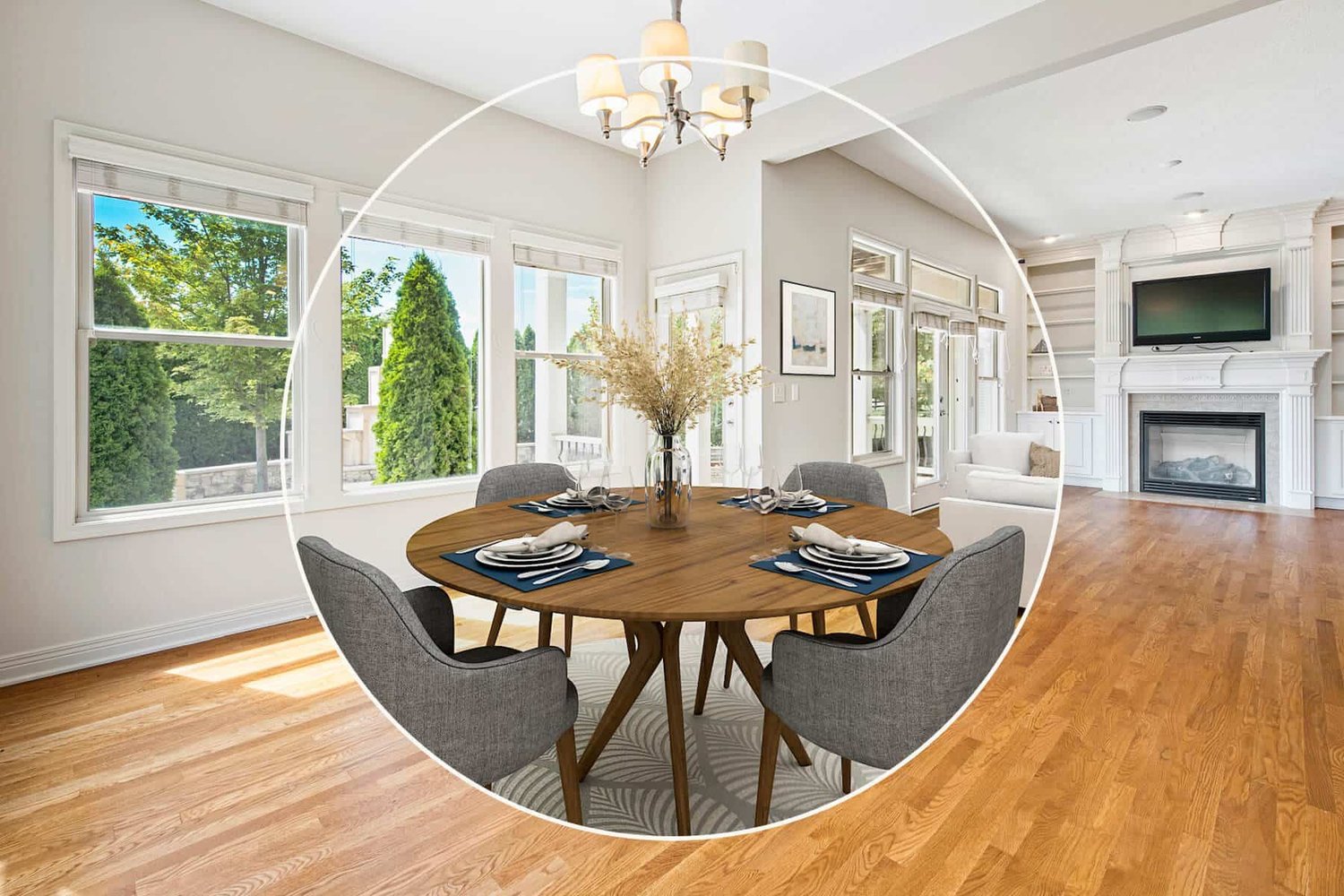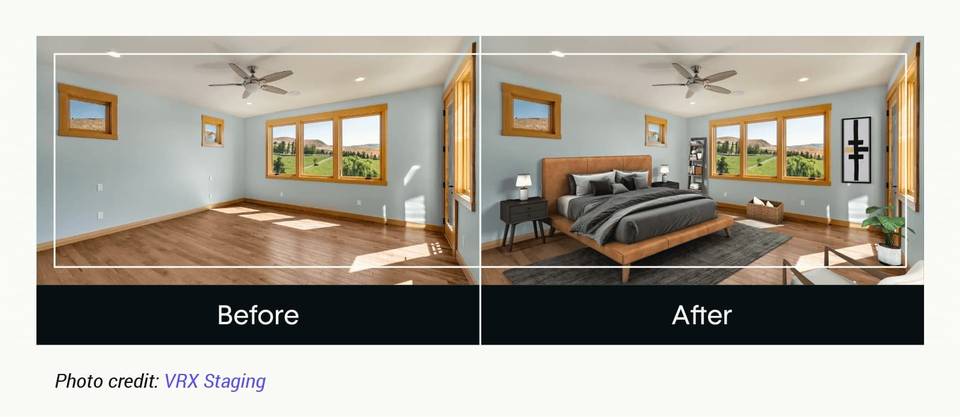Pros
Let’s start with the benefits. Virtual staging is disrupting the home staging process for a reason: because it is more efficient than traditional home staging. The no-contact nature of virtual home staging has made it especially valuable during the COVID-19 pandemic, as it eliminates the need to have stagers in your home.
Here are some of the main benefits of virtual home staging:
1. Cost: Home staging has always touted strong statistics, like a 586% ROI (!!) even with traditional expenses factored in. But for most of us deciding on home services, cost is a major factor, and home staging doesn’t necessarily come cheap. Virtual staging cuts traditional costs dramatically — as much as 90%. And depending on who you ask, these savings come without sacrificing much quality (if any).
Traditional staging costs, on average, around $2,000 to $2,400, compared to around $100 per photograph of a virtually staged home (and some services go even cheaper!). Virtual staging also eliminates the need for consultation costs, and typically you only pay a one-time fee per photograph; traditional home staging can charge weekly or monthly, depending how long the decor stays on site.
2. Creative freedom: There are some things that graphic designers can do that in-person designers can’t pull off, like blanketing an exterior in snow during summertime.
With virtual home staging, a home and its exterior can be transformed to any style. It’s much easier to change paint colors virtually, and multipurpose rooms can be showcased in different ways depending on a prospective client’s needs, such as staging a home office as a guest bedroom.
3. Convenience: Traditional home staging usually only works if you’re selling a home you don’t currently live in, but virtual home staging offers a lot more flexibility for sellers. While a high-quality photograph of an empty room allows for the most design freedom, most virtual home stagers can also use pictures of fully furnished rooms to swap out certain furniture items.
This means that as the home seller, you could either empty out a room for a day or even
leave the furniture as-is, while still getting virtually staged photographs to show potential buyers.





